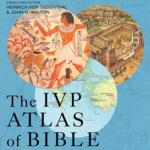Everyone knows how to summarize Calvinism. It’s TULIP. And it’s a venerable summary, going all the way back to Dordt. Not so, argues Ken Stewart in his recent Ten Myths About Calvinism: Recovering the Breadth of the Reformed Tradition . On page 291, Stewart reproduces a page from a 1913 issue of The Outlook , which he claims is the earliest known reference to the acronym. Read more
















